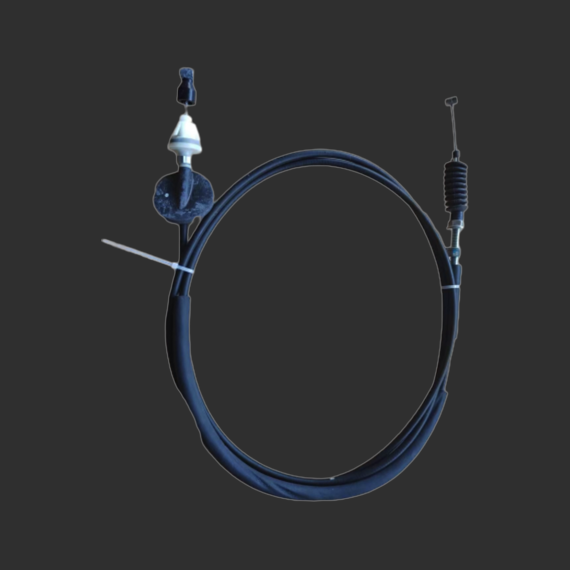stainless clutch line
The Evolution and Benefits of Stainless Steel Clutch Lines in Automotive Engineering
In the world of automotive engineering, the importance of a vehicle’s clutch system cannot be overstated. It plays a pivotal role in facilitating the transmission of power from the engine to the wheels, allowing for smooth acceleration and deceleration. While traditional rubber clutch lines have served their purpose, advancements in material science have ushered in a new era with stainless steel clutch lines taking center stage. This article will explore the evolution, advantages, and increasing adoption of stainless steel clutch lines in modern vehicles.
The Evolution of Clutch Lines
Historically, clutch lines were typically made from rubber or soft plastic materials. These materials were adequate for standard applications but had significant drawbacks, such as vulnerability to heat, chemical exposure, and general wear and tear. Over time, it became apparent that these limitations could jeopardize the performance and safety of the clutch system, particularly in high-performance and racing applications.
The introduction of stainless steel as a line material marked a significant milestone in clutch line technology. Stainless steel is known for its exceptional strength, corrosion resistance, and durability, making it an ideal choice for automotive applications. Unlike rubber, which can degrade over time and become brittle, stainless steel maintains its integrity and performance, even under extreme conditions.
Advantages of Stainless Steel Clutch Lines
1. Durability and Longevity One of the primary benefits of stainless steel clutch lines is their durability. Stainless steel is resistant to corrosion and can withstand high pressures, reducing the risk of failure under strenuous driving conditions. This durability translates into a longer lifespan, making stainless steel clutch lines a cost-effective choice over time.
2. Improved Performance Stainless steel clutch lines provide a more consistent pedal feel, enhancing the overall driving experience. The material does not expand or contract under pressure as rubber does, ensuring that the clutch engages and disengages smoothly. This can be particularly crucial for high-performance vehicles, where precise control is essential.
3. Heat Resistance Clutch systems can generate significant heat during operation, especially in strenuous conditions like racing or heavy towing. Stainless steel has a higher thermal tolerance than rubber, ensuring that the clutch line remains stable and functional even under extreme heat. This feature is vital for preventing vapor lock, which can lead to clutch failure.
stainless clutch line

4. Aesthetic Appeal In addition to performance benefits, stainless steel clutch lines offer a sleek, modern aesthetic. Many automotive enthusiasts appreciate the appearance of stainless steel components, often opting for them as part of custom builds or restorations. Stainless steel clutch lines can add a touch of sophistication to any vehicle’s undercarriage.
5. Ease of Installation Stainless steel clutch lines are typically available in pre-formed lengths, designed to fit specific vehicle models. This not only simplifies installation but ensures that the lines are properly routed, minimizing potential interference with other components.
Increased Adoption in the Automotive Industry
As awareness of the advantages of stainless steel clutch lines continues to grow, their adoption is becoming increasingly prevalent across various sectors of the automotive industry. Manufacturers of performance vehicles and aftermarket parts are particularly keen on offering stainless steel options, catering to the growing demands of car enthusiasts seeking reliable and high-performance upgrades.
In racing, the transition to stainless steel clutch lines has been swift, as drivers and teams prioritize safety and performance. The reduced risk of line failure and improved pedal feedback make stainless steel an obvious choice for those pushing the limits of automotive engineering.
Moreover, as electric vehicles (EVs) become more commonplace, there is a consistent need for robust and reliable components that can handle the unique demands of electric drivetrains. Stainless steel clutch lines fit this bill perfectly, making them an attractive option for manufacturers of hybrid and fully electric vehicles.
Conclusion
In summary, stainless steel clutch lines represent a significant advancement in automotive technology. Their durability, enhanced performance, heat resistance, and aesthetic appeal make them a superior choice compared to traditional rubber lines. As the automotive industry continues to evolve, the demand for reliable and high-performance components will only grow, ensuring that stainless steel clutch lines remain a staple in both performance and everyday vehicles. Whether you are a professional racer, a weekend enthusiast, or simply someone looking for a reliable upgrade, investing in stainless steel clutch lines may be one of the best decisions you can make for your vehicle's performance and safety.
-
Upgrade Your Control with Premium Throttle CablesNewsAug.08,2025
-
Stay in Control with Premium Hand Brake CablesNewsAug.08,2025
-
Experience Unmatched Performance with Our Clutch HosesNewsAug.08,2025
-
Ensure Safety and Reliability with Premium Handbrake CablesNewsAug.08,2025
-
Enhance Your Vehicle with High-Performance Clutch LinesNewsAug.08,2025
-
Elevate Your Ride with Premium Gear CablesNewsAug.08,2025
